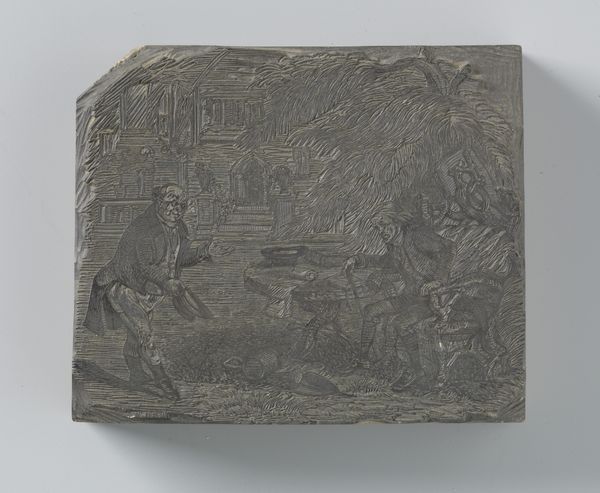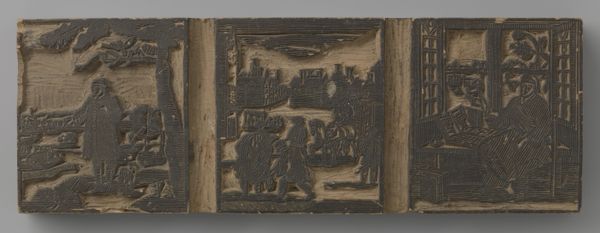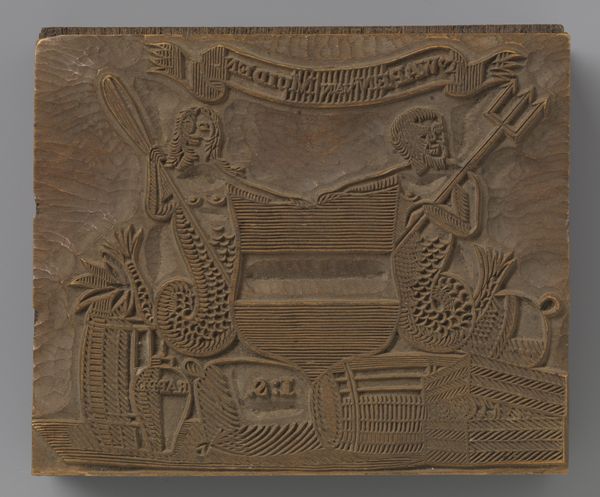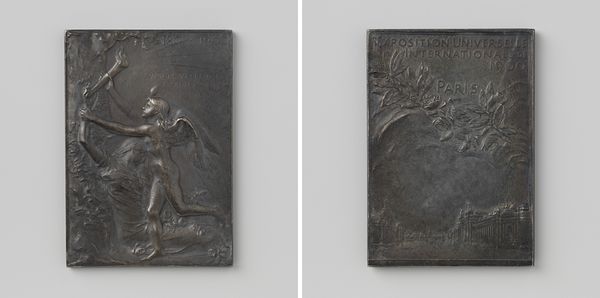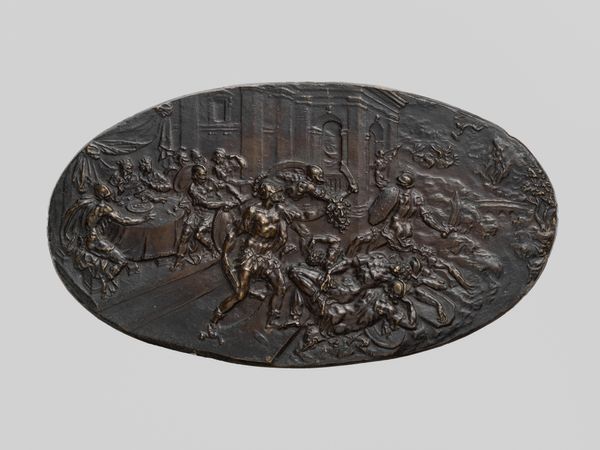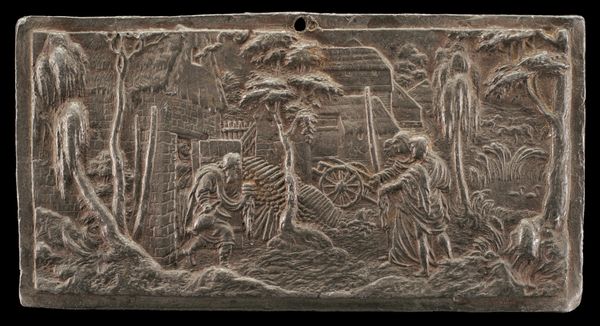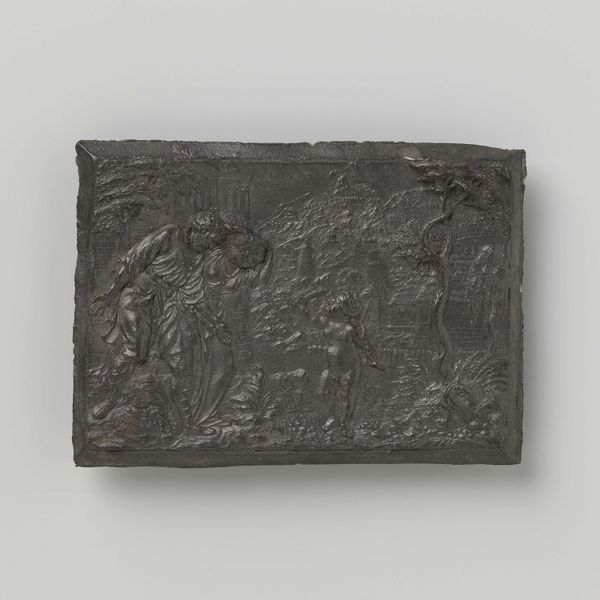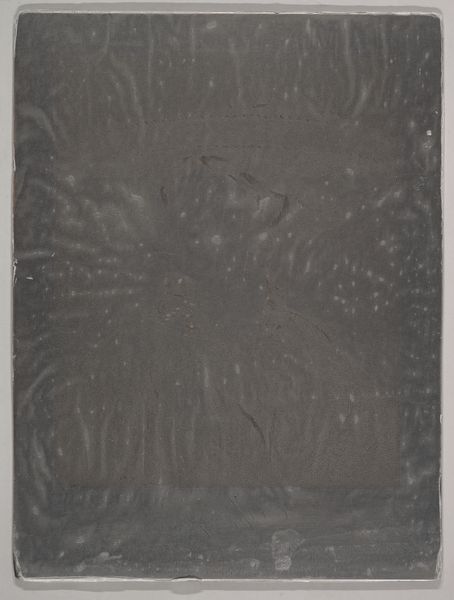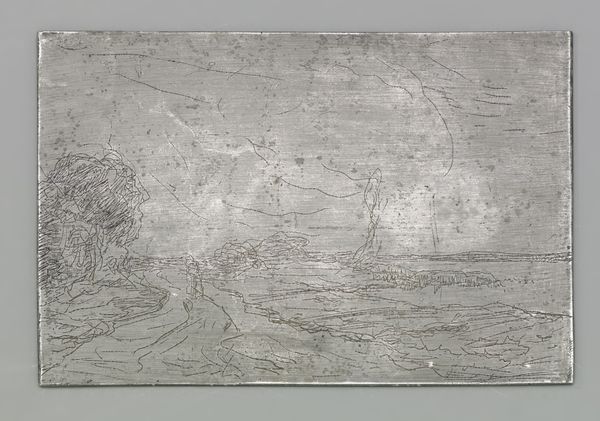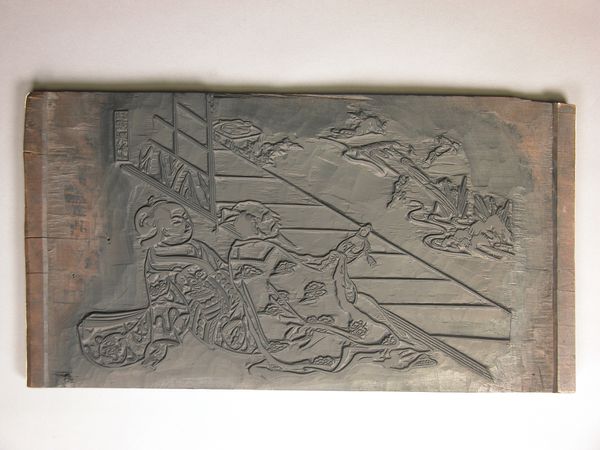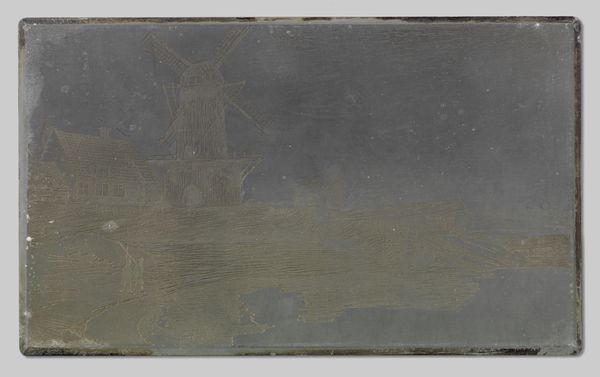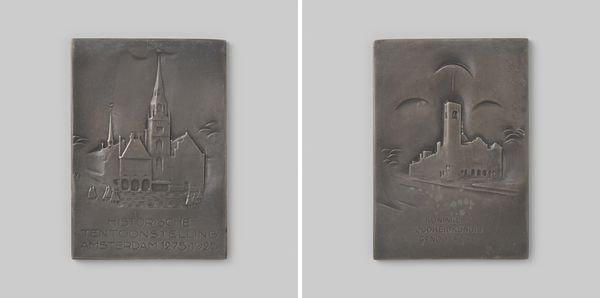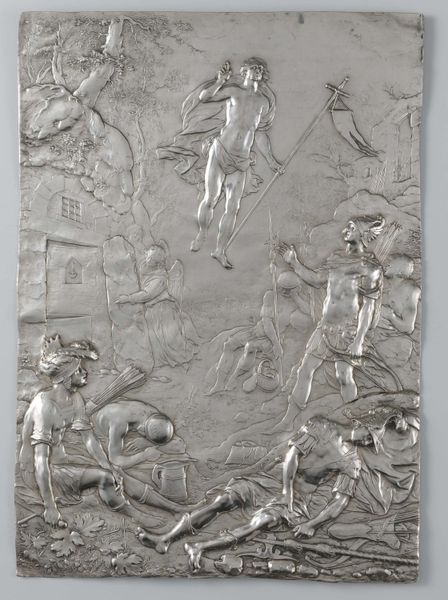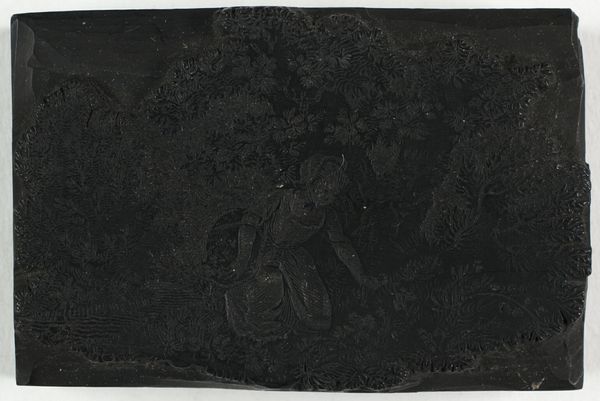
#
natural stone pattern
#
homemade paper
#
textured paper
#
pale palette
#
detailed texture
#
paper texture
#
chalky texture
#
watercolour bleed
#
mixed medium
#
watercolor
Dimensions: height 25 cm, width 36 cm
Copyright: Rijks Museum: Open Domain
This woodblock, now in the Rijksmuseum, was made by Tsukioka Kôgyo, who lived from 1869 to 1927. Woodblocks are used for printing. In this case, the block itself is the artwork. We can see in it a fascinating collision of the old and the new, a pictorial struggle that tells a story of cultural change and innovation. Japan, at this time, was undergoing rapid modernization, opening itself to Western influences while trying to maintain its unique cultural identity. The printmaking tradition in Japan has a long history. It was tied to popular culture and commercial enterprise, making art accessible to the masses. This was in stark contrast to elite forms of art patronage. Kôgyo's block would have been made at a time when photography and Western-style painting threatened the traditional role of the woodblock print. Artists experimented with new styles, while trying to keep their cultural heritage alive. Historians interested in the printmaking industry can research the lives of the artists, publishers, and craftsmen involved. They look at how political events affected popular taste. They explore the tension between tradition and modernity in the cultural landscape of Japan.
Comments
No comments
Be the first to comment and join the conversation on the ultimate creative platform.
